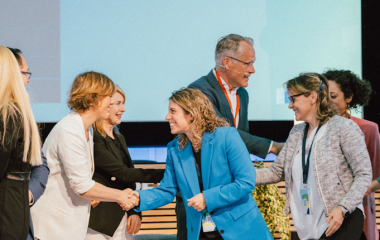
Photo: Balkan Green Energy News
Author: Slađana Sredojević, Public-private partnership (PPP) Consultant, Association of Serbian Banks
The improvement of energy efficiency (EE) both in terms of production and consumption has been recognized as one of key elements of the energy policy of the Republic of Serbia (RS), in accordance with the Energy Development Strategy of the Republic of Serbia until 2025 with projections until 2030 (Official Gazette of the RS, No.101/15). The implementation of measures needed to achieve this goal requires mobilizing significant financial resources, promoting energy efficiency, and further liberalizing the energy market.
In this sphere, it is important to mention possibilities envisaged under the Law on Public-Private Partnership and Concessions (Official Gazette of the RS, No. 88/2011, 15/2016, 104/2016), which recognizes the field of energy efficiency as an area in which the advantages of PPP can be manifold.
Specifically, when a public-private partnership is applied to an EE project, an Energy Service Company (ESCO) is present as a company managing measures to improve energy efficiency and ensuring they are financed from savings, are guaranteed, do not generate new debt for the public body.
Contribution of PPP to the development of the energy efficiency market
When it comes to the PPP market in Serbia, energy efficiency projects are among the priorities on the development side of a large number of local governments. Namely, out of 45 projects proposed by the PPP Commission since 2012 for implementation through the public-private partnership model, as many as 15 project proposals, or 33%, refer to the field of energy efficiency at the local government level.
Bearing in mind the affirmative legal framework in the field of EE, as well as local governments’ development needs, a significant number of projects based on modern technology and solutions can also be expected in the future, thus contributing to the further strengthening of the domestic PPP market.
Significance of the predictability of steps – the activity chart
PPP is a very complex and multidisciplinary concept, one whose characteristics are particularly evident in energy efficiency projects. In addition, the time dimension is an additional requirement and challenge for all participants in the procedure. The shortest length of a PPP project is 5 and the longest possible 50 years.
For successful implementation, knowledge is needed of both the laws governing this field and a number of other matters, including public finances, corporate financing, project financing, project management, negotiation skills, project management skills, and the sector’s specific characteristics.
In order to facilitate this process, many internationally and nationally renowned institutions, such as the World Bank and the Standing Conference of Towns and Municipalities (SCTM), develop guidelines and standardized documents relating to implementation. Accordingly, the steps envisaged by the domestic legal framework for PPPs and concessions are numerous.
I Justification of the application of the PPP model
Consideration of the priority project and the possibility of applying the PPP model refers to whether the project would solve the existing problem and meet the public interest (public goal), and whether the PPP model is applicable to the defined priority project, as well as which risks the public sector could incur, etc.
II Preparation of the process
Preparation for the PPP process consists of the establishment of a multidisciplinary team in the public body that will be responsible for the implementation of the PPP process. Of course, the team should enjoy community and political support from the team leader (e.g. mayor), with possible engagement of external advisors, the performance of feasibility studies, etc.
Then, the procedure is formally announced, followed by the formal preparation of the PPP project proposal in accordance with the provisions of Article 27 of the Law on Public-Private Partnership and Concessions. Necessary consents by the competent public body, by the PPP Commission and the Ministry of Finance, which propose the project for implementation through PPP, should be provided.

III Procedure of the public contract award
Implementation of the procedure for selecting a private partner includes, inter alia, a timely announcement of the public invitation, preparation of tendering documents, defining criteria for selecting the most favorable bid, bid submission deadlines, possible guarantees, and finally the formal procedure for awarding a public contract. In concessions and projects with a value greater than EUR 50 million, the procedure for selecting a private partner – a concessionaire is to be implemented in several stages.
Once the required consents of the competent public body are obtained, the signing of a public contract on PPP takes place, followed by setting up a special purpose vehicle, with compulsory registration of the public contract in the Public Contracts Registry.
IV Implementation
Mandatory and continuous monitoring is particularly important for the public body – to monitor the contract, to manage changes to the contract and the project, and to do so in the spirit of good partnership. Should a problem arise, all mechanisms available to overcome the situation should be used, such as mediation, but also dispute resolution.
Upon completion of the project, it is very important to analyze experience with the process in order to arrive atand exchange conclusions and avoid any bad practice.
The application of these steps must be accompanied by the application of laws that regulate not only the field of PPPs and concessions, but also other laws and acts relevant to the sector in question, making sure specific characteristics of the local environment and of the individual project are taken into account.
The analysis of launched PPP projects on the Serbian market and direct participation in the implementation of PPPs shows that those projects that have successfully entered the implementation phase were carefully prepared. Economic cost-effectiveness analyses were objectively implemented, the establishment of project and expert teams with experts of various adequate qualifications was immediate, and there was a good balance of professional and political support, with appropriate attention paid to the inclusion of and communication with the public.
The phase of objective assessment of the justification of applying the PPP model and the phase of quality preparation of the PPP / concession project proposal are crucial for the success of implementation.


















Be the first one to comment on this article.